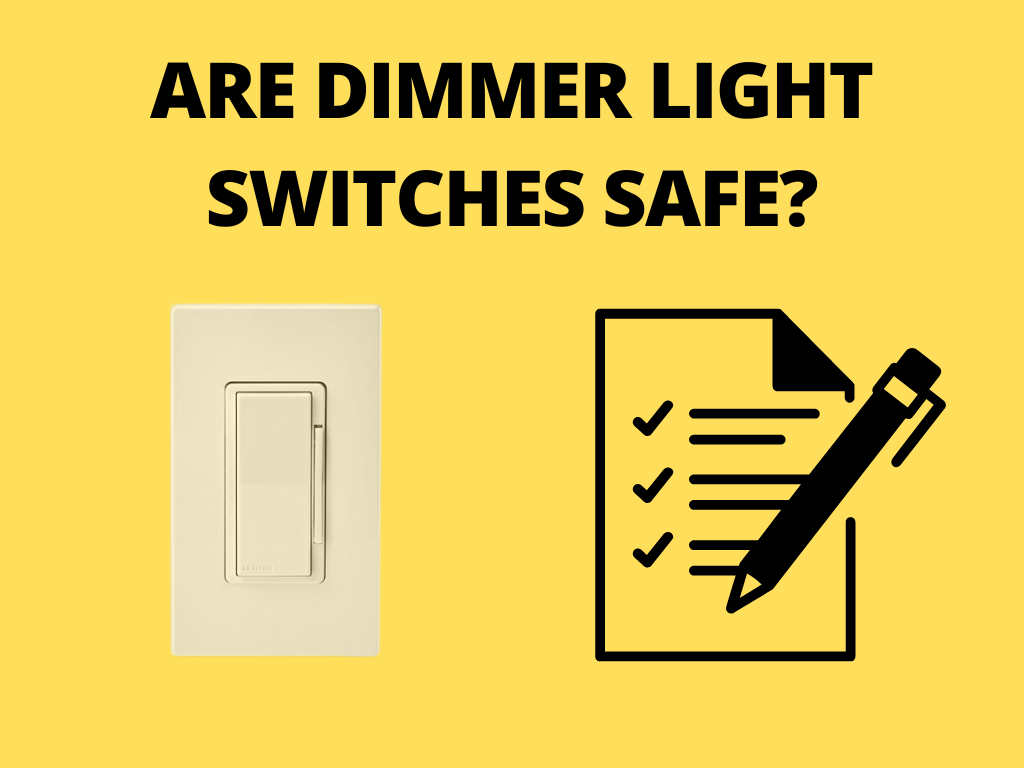More and more homeowners are choosing dimmer light switches to control the amount of light in their homes. But are dimmer light switches safe? Let’s take a look at the potential risks of using them in your home.
What are the potential risks of using dimmer light switches in your home?
There are a few potential risks to be aware of before installing dimmer switches in your home.
First, dimmer switches can generate heat, which can be a fire hazard if they are not properly installed. It is normal for a dimmer switch to feel warm to the touch during use so don’t be alarmed if this happens.
Second, dimmer switches can cause flickering lights, which can be distracting and potentially harmful to your eyesight. If you experience this, try adjusting the dimmer switch to see if it helps.
While the risks of using dimmer light switches are relatively low, it is important to be aware of them before making the switch in your home.
How can you minimize these risks and make sure that your dimmer light switch is safe to use in your home?
Although dimmer light switches are a convenient way to control the amount of light in a room, they can also pose a serious fire hazard if they are not installed and used correctly.
One way to minimize the risks associated with dimmer switches is to make sure that they are properly rated for the wattage of the bulbs that they will be controlling. Dimmer switches are available in a variety of wattages, and using a switch that is not properly rated for the wattage of your bulbs can create a fire hazard. Using a switch that is too small for the bulbs can cause it to overheat, potentially leading to a fire.
Finally, it is important to regularly check dimmer switches for signs of wear and tear, as loose wires or other damage can also lead to fires. By taking these precautions, you can help to ensure that your dimmer light switch is safe to use in your home.
A safe alternative for dimmer switches
Are there any other alternatives to using a dimmer light switch in your home that provide the same level of control over the amount of light in a room without the potential risks associated with them?
Besides using a dimmer light switch, another great way to control the amount of light in your room is by using a smart light bulb.
Smart light bulbs are more expensive than your average light bulb, but they provide a lot more features and benefits.
One great benefit of smart light bulbs is that you can control them with your phone. So, if you want to dim your lights, you can just open up the app on your phone and adjust the brightness settings.
Another benefit of smart light bulbs is that they often come with built-in timers. So, if you want your lights to turn off at a certain time, you can just set the timer and forget about it.
Overall, smart light bulbs are a great alternative to dimmer light switches and can provide you with a lot of control over the amount of light in your room without the potential risks associated with them. Smart bulbs are easy to install if you compare them to a dimmer switch and they are becoming more affordable as technology improves. So it might be worth considering making the switch to smart bulbs in your home.
What are some common problems with dimmer light switches?
Dimmer light switches are designed to save energy and extend the life of your lightbulbs, but they can sometimes cause problems. Here are some of the most common issues:
• Flickering: This is usually caused by a loose connection or by incompatible bulbs. Try tightening the connections and/or using different bulbs.
• Low light output: This can be caused by a dimmer switch that is not compatible with your bulbs. Make sure you are using the right bulbs and clean any dirt or debris from the connections.
• Bulbs burning out too soon: This is often caused by using the wrong bulbs or by overloading the circuit. Make sure you are using the right bulbs and don’t exceed the maximum load for your circuit.
• Drop out: When trying to dim the lights, they suddenly go out before you reach the bottom of the button. When you dim your LEDs, they sometimes flicker before going out entirely. This is because the voltage required to power them is lower than the drop-out voltage of your dimmer switch. The result is a “dead travel” on the controller.
Dimmer light switches can be a great way to save energy and extend the life of your lightbulbs, but they can sometimes cause problems. By troubleshooting common issues, you can keep your dimmer switch working properly.
Conclusion: When used correctly, dimmer switches are a safe and effective way to control the lighting in your home. By following the manufacturer’s instructions, you can minimize the risk of electrical hazards.
When choosing a dimmer switch, it is important to select one that is compatible with the type of bulbs you are using. Incandescent and halogen bulbs are generally safe to use with dimmer switches but LED and CFL bulbs may require a special type of dimmer. Once you have installed your dimmer switch, be sure to test it out before using it to ensure that it is working properly. With a little bit of care, you can enjoy the convenience and safety of using a dimmer switch in your home.
If you are looking for an alternative to a dimmer light switch, consider using a smart bulb. Smart bulbs provide a lot of benefits over traditional light bulbs and are easy to install.
Smart bulbs are a great way to save energy and extend the life of your lightbulbs without the potential risks associated with dimmer switches.

